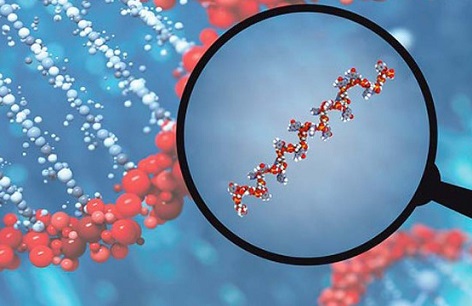BREAKING Medical News! Discovery Of Hidden Viral Proteins In ssRNA Viruses Opens A New Dimension In Virology And Is Relevant For SARS-CoV-2!
Nikhil Prasad Fact checked by:Thailand Medical News Team Jan 26, 2024 1 year, 3 months, 1 hour, 10 minutes ago
Medical News: In the realm of virology, the discovery of hidden viral proteins within the genomes of single-stranded RNA (+ssRNA) viruses has opened a new dimension, challenging long-standing beliefs about the coding capacity of certain viral intermediates. The implications of this revelation extend to viruses affecting both animals and plants, including the notorious SARS-CoV-2 responsible for the ongoing COVID-19 pandemic.
 Discovery Of Hidden Viral Proteins In ssRNA Viruses Opens A New Dimension In Virology
Discovery Of Hidden Viral Proteins In ssRNA Viruses Opens A New Dimension In Virology
Thailand
Medical News had already been warning about viral peptides that SARS-CoV-2 could encode and are not part of its sub-genomic structure. Some scientists were discounting these viral peptides as junk proteins made during translation mishaps and replication. But as far as we at Thailand Medical News are concern, these viral peptides are pathogenic themselves
We even postulated then that some of these viral peptides could also play a role in Long COVID even after SARS-CoV-2 viral clearance in a past
COVID-19 News coverages.
https://www.thailandmedical.news/news/breaking-long-covid-is-a-misnomer-the-conditions-are-being-caused-by-viral-persistence-and-viral-peptides-similar-to-retrotransposons-and-introns
https://www.thailandmedical.news/news/breaking-covid-19-news-discovery-of-sars-cov-2-short-rnas-by-scientist-from-john-hopkins-is-a-big-gamechanger-in-terms-of-pathogenesis-and-long-covid
https://www.thailandmedical.news/news/there-is-no-such-thing-as-long-covid-sars-cov-2-exposure-causes-persistent-infections-along-with-continuous-presence-of-short-viral-rnas-svrnas
https://www.thailandmedical.news/news/breaking-news-scientists-discover-sars-cov-2-mirnas-that-contributes-to-pathogenesis-and-can-be-used-as-a-biomarker-for-covid-19-severity
A recent study even validated the presence of such viral peptides that are encoded by the SARS-CoV-2 virus!
https://www.thailan
dmedical.news/news/breaking-covid-19-news-australian-scientists-discover-a-microrna-called-cov2-mir-o8-that-is-encoded-by-sars-cov-2-and-is-possibly-pathogenetic
We also have another crazy hypothesis which hopefully will be validated soon…some of these viral peptides can also replicate via hijacking host cellular functions!
Diversity in Viral Genomes
Viruses, characterized as submicroscopic obligate intracellular parasites, exhibit considerable diversity in their genomic structures. Classified into seven classes based on their genomic nucleic acid and replicative intermediates, +ssRNA viruses dominate as the most abundant viruses in eukaryotes. These viruses, with monopartite, bipartite, or tripartite ssRNA genomes, pose significant threats to human, animal, and plant health, causing diseases such as COVID-19, dengue, Zika, and foot-and-mouth disease.
Hidden Proteins in Unlikely Places
Traditionally, it was believed that viral proteins are exclusively encoded by the genomic RNA of +ssRNA viruses, while the negative-sense RNA (−RNA) served as a replication intermediate devoid of coding capacity. However, recent groundbreaking research by Gong and colleagues challenges this consensus. They unveiled the presence of small open reading frames (rORFs) within the −RNA of +ssRNA viruses, indicating that these viruses possess a coding capacity in their previously overlooked replicative intermediates.
https://www.cell.com/molecular-plant/fulltext/S1674-2052(23)00291-5
Functional Significance of Hidden Proteins
The discovery of these hidden proteins has far-reaching implications for our understanding of viral infections. Using turnip mosaic virus (TuMV) as a model, Gong and colleagues demonstrated that proteins encoded by rORFs in the −RNA have specific subcellular localizations, interact with viral RNA-dependent RNA polymerase, and play critical roles in viral infection. For SARS-CoV-2, several rORFs within its −RNA were found to suppress type I interferon production, highlighting their significance in modulating host immune responses.
Translation Strategies and Beyond
Viruses have evolved various noncanonical translation strategies to maximize their coding capacity, such as internal ribosome entry. The findings suggest that SARS-CoV-2 and TuMV may use internal ribosome entry sites (IRES) to translate the small rORFs within their −RNA. This challenges the conventional view that viral proteins are exclusively translated from genomic RNA and opens new avenues for exploring diverse translation mechanisms in viruses.
Hidden Proteins in ssDNA Viruses
Interestingly, hidden viral proteins are not exclusive to +ssRNA viruses. Geminiviruses, phytopathogenic DNA viruses with circular single-stranded DNA genomes, were found to encode small hidden ORFs with biological functions. These findings indicate that the presence of hidden proteins is not limited to specific viral genomic structures but may be a common feature across diverse virus families.
Implications and Future Perspectives
The discovery of hidden viral proteins in +ssRNA viruses and ssDNA viruses has expanded our understanding of viral proteomes. The identification and functional characterization of these proteins provide valuable insights into the infection cycle and virulence mechanisms. The revelation prompts a reassessment of the coding potential of viral replicative intermediates and calls for further exploration into the existence of hidden proteins in other virus classes, including double-stranded DNA (dsDNA), double-stranded RNA (dsRNA), and negative-sense single-stranded RNA (−ssRNA) viruses.
With advancements in technology, such as nanopore sequencing and ribosome profiling, the identification of unknown small proteins from diverse viruses becomes increasingly feasible. Understanding the roles of these hidden proteins in infection cycles may pave the way for developing innovative strategies to prevent and control devastating viruses affecting both animals and plants.
Conclusion
The discovery of hidden viral proteins challenges preconceived notions about the coding capacity of certain viral intermediates and unveils a new frontier in virology. As we delve deeper into the intricate world of viral genomes and proteomes, the implications of these findings extend beyond basic research, offering promising avenues for the development of antiviral strategies and therapeutics. In the ongoing battle against viral diseases, these revelations may hold the key to unlocking novel approaches for preventing and controlling infections, ultimately safeguarding global health.
Reference:
https://journals.plos.org/plospathogens/article?id=10.1371/journal.ppat.1011905
Thailand
Medical News would like at to add that we strongly believe that the SARS-CoV-2 could possibly be encoding more that a few hundred different such viral peptides and all with unique pathogenic properties. Already, though we have identified more than 2000 human host cellular pathways, genes, enzymes and proteases affected by the SARS-CoV-2 virus, their existing component proteins does not seem to account for a lot of these and it makes sense that such viral peptides are at play!
For the latest
Medical News, keep on logging to Thailand Medical News.
